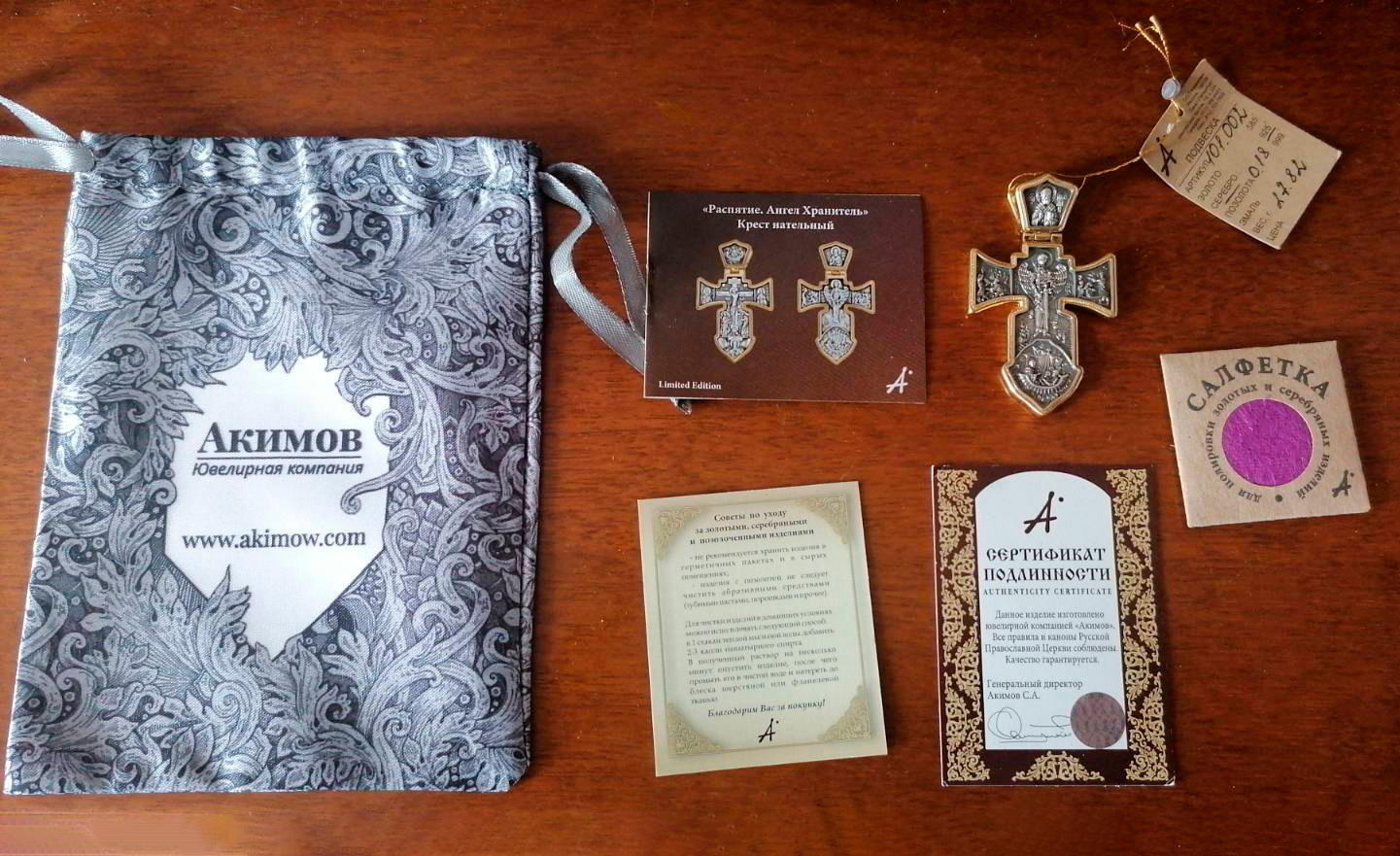Neck Cross Akimov 101.261 «Jesus Christ «The King of Kings». The Mother of God Icon «The Sovereign (Derzhavnaya)»

- Product with tag and seal
- Certificate of authenticity with hologram
- Product description book
- Jewelry Care Memo
- Canvas bag with the «Akimov» company logo
12 months warrantyGuarantee for all purchased goods in our online store is 12 months.
Tracking numberYou receive a Track Number to track each step of the delivery of your order.
Return and exchange - no problemYou can return the items purchased within 14 days. The goods must be in normal condition and have all the factory packages.
Different payment methodsPayment cards VISA and MasterCard, Google Pay, Apple Pay, Visa Checkout, Masterpass
Best priceWe are proud of our prices, hundreds of customers check them every day, which give a choice to our online store!
- Silver (925). Gilding (999).
- Miniature relief, casting, gilding, niello, handwork.
"On the cross obverse we see Our Lord Jesus Christ sitting on the throne, accompanied by seraphim. He is regally dressed in dalmatic and lorus: floor-skimming robe and a wide decorated band lying on His waist and shoulders. On the icon one more band is as well shown above the lorus — that is the omophorion, an accessory of archiepiscopal liturgical garments. On the Savior head there is regal crown resembling the archiepiscopal miter. Such a combination of regal and ecclesiastic attire has reason behind it. The Lord is shown as The King of Kings and The Great Hierarch. The iconography is based on the Book of Psalms words addressed to Messiah: The Lord has sworn and will not change His mind, ""You are a priest forever According to the order of Melchizedek."" (Psalms 110: 4); and on the text of the Book of Revelation where Christ is named “KING OF KINGS AND LORD OF LORDS.” (Rev. 19:16). In common with Melchizedek who at one time had presented bread and wine to Abraham after his triumphal return, Jesus Christ at the Last Supper gave bread and wine to the apostles and then He sacrificed Himself for reconciliation human beings and God. Jesus is named the King of Kings not only due His absolute power over the world, but also due His being a kind King, He has the good of people at His heart and uses His might for struggle against evil. The Christian volume in Christ’s hands symbolizes His priesthood and the Law He has given to the world as the King.
On the reverse the Most Holy Mother of God is depicted in the same regal way. She is the mother of the King of Kings and therefore is vested with supreme power. The Queen of Heaven sits on the throne together with Her royal Son. The crown is there on Her head, and symbols of reign — the sceptre and the ball — are in Her hands. This icon of the Mother of God is called ""The Sovereign"", its invention having been associated with miracle. Evdokia Adrianova, a peasant woman, started seeing dreams where the Mother of God called on her to travel to the village of Kolomenskoye, and to find a black icon and make it red there in the church for The Ascension of Christ . After long search they found, in an old storage room, a large icon black with age and covered with candle soot. But as they took the icon outdoors, the sunlight revealed that the Mother of God was wearing the scarlet robes of a monarch. She also wore the Imperial crown and held a sceptre and globus cruciger — the symbols of regal authority. Since all this took place on the same day (March 15, 1917) as the Emperor Nicolas II was forced out of abdication from the throne, the appearance of the icon was immediately thought to be connected with that event, which resulted first in spontaneous and later in ecclesial veneration of ""The Sovereign"" icon. Symbolically the icon invention was interpreted this way: the Mother of God took up the Crown that had fallen from the head of the Tsar, as well as the sceptre and the ball, and became the Protectress of the Russian throne, thus granting a hope for revival of Russia and Russian state.
On both sides the throne of the Most Holy Mother of God is beforestood by St. Silouan (sometimes St. Silvanus) the Athonite and Holy Martyr Yelizaveta Fyodorovna. These are Great Russian saints of the beginning of 20th century. Much of his life St. Silouan (1866-1938) spent in the Athos where he had a blessing to appearance of Jesus Christ Himself. The Lord gifted him a special grace of healing illnesses and giving help in exigency of life. The Great Duchess Yelizaveta Fyodorovna (1864 -1918) was born in Darmstadt. Russia became her the second motherland where she was famed for charities and acts of mercy. On July 5 (18) the Great Duchess together with the lay-sister Varvara Yakovleva was murdered by Bolsheviks in Alapayevsk. In 1921 the remains of martyrs Yelizaveta and Varvara were taken to Jerusalem, where they were laid to rest in the Church of Maria Magdalene in Gethsemane."
No posts found

